Free-D: On the Sculpture of Matt Freedman
by Lisa Hein, 12 Feb 2021
Matt Freedman had so many talents it takes a village to recount them. This essay is about his sculpture, which populated his studio like breeding tribbles. Besides masks and models and bobblehead self-portraits, Freedman made scores of tiny effigies to give as gifts. They were everything a serious artist was forbidden: funny, adorable, inscribed with a heart. If you got one, you laughed, and were tempted to laugh it off. It belonged to that dishonored class of sculpture known as tchotchke.
How did such a sophisticate come to this? By avoiding art school as long as he could. Freedman majored in anthropology in college, then worked in hometown Chicago as a writer and cartoonist into the 1980s. By the time he landed in Iowa, midcentury rigors like Minimalism were over. Never fearing the figure, Freedman embraced a thriving Chicago tradition that also produced Elizabeth Murray, Gladys Nilsson, and Kerry James Marshall.
Romanov Grave’s video archive includes “Becoming a Populist”, in which Freedman tells the story of his first sculpture commission. The artist was still in grad school, and the project was ambitious and perplexing. A life-size family group made of cast iron rests in pensive postures while tiny figures proliferate beneath. The parents sit exhausted as their too-young son gazes out to a future beyond them. An adult homunculus presides from the father’s belly.
As the sculpture was installed, a local resident stopped to comment. “These people are zombies. Sculpture is supposed to BE somebody. It’s supposed to be George Washington, or the mayor of Chicago, or a college professor!” At that moment, Freedman began the turn “to become a populist”.
The sidewalk critic had hit a nerve. If an artist is a good family’s method of downward mobility, the Freedmans needed grounding from heights that were literally Olympian. Not only had Freedman attended Harvard, and published half a dozen books while still in his twenties; his crew team also went to Seoul for the 1988 Summer Games. By the time of the Chicago commission, Freedman was measuring up to his dad, who was in fact an eminent professor at the University of Chicago.
A forensic psychiatrist who served star turns as expert witness in notorious criminal trials, Lawrence Freedman appreciated the layman’s remark. Yet like many academics, the elder Freedman felt thwarted in his career. No amount of achievement brought the recognition he craved. How was Matt to escape the same disappointment? His art to that point, both sculpture and cartoons, was like his college anthro major or his father’s analysis; it assigned individuals to broader categories. A murderer was fit or unfit to stand trial; a statue was Everyman or Everywoman. Becoming a populist, Freedman broke the zombie spell of academic essentialism. From then on, he would revel in the specific. He would sculpt just the little people, sparking them to life with the wit and buoyancy of his cartoons.
The little people, of course, were us: the vast circle of his colleagues who make up the dark matter of the art world. Freedman would arrive at birthdays bearing tiny sculpture in a cloud of enamel fumes, its surface still sticky and tender. Quick as they were dashed off, though, they never counted on just the thought. They depicted a project or pastime of the recipient’s, one you were amazed he remembered or even knew about. Bob Seng, for instance, received the gift of a model golf hole. Its pole and flag depict work Seng had shown alongside Freedman’s, decades before at SculptureCenter. A monument before the fact, it also renders, on reverse, a Seng EXIT flag — years before Seng ever designed one. Freedman scoffed at mumbo-jumbo and would dispute oracular powers. But few would deny that Freedman’s eyes, often inward if not averted in conversation, could see both far and deep.
Thanks to Jude Tallichet, Luisa Caldwell and Robert Hickman for their help with Matt’s early history.
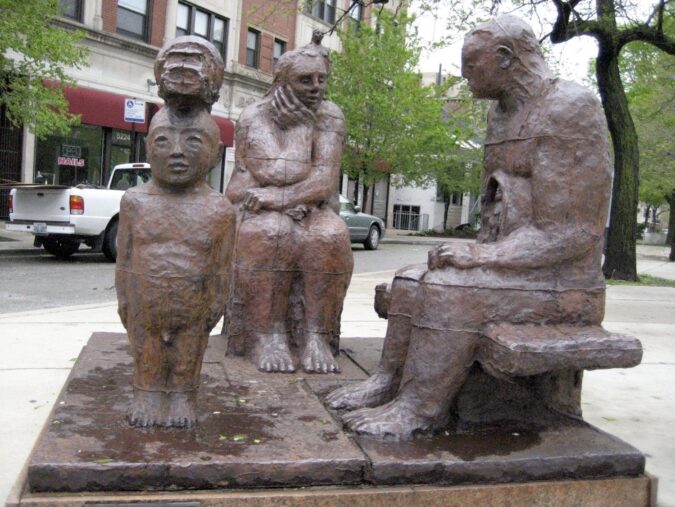
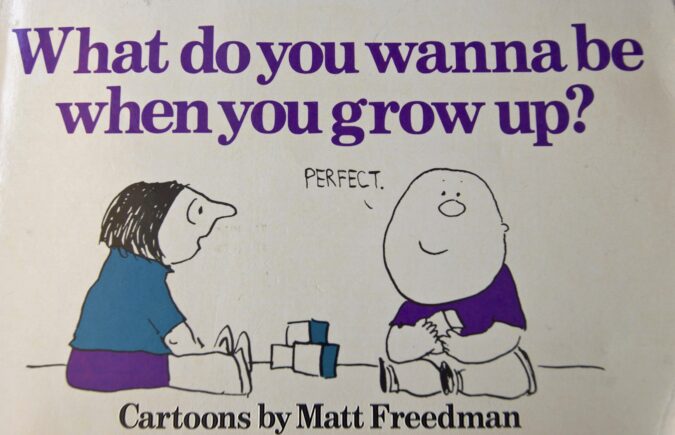
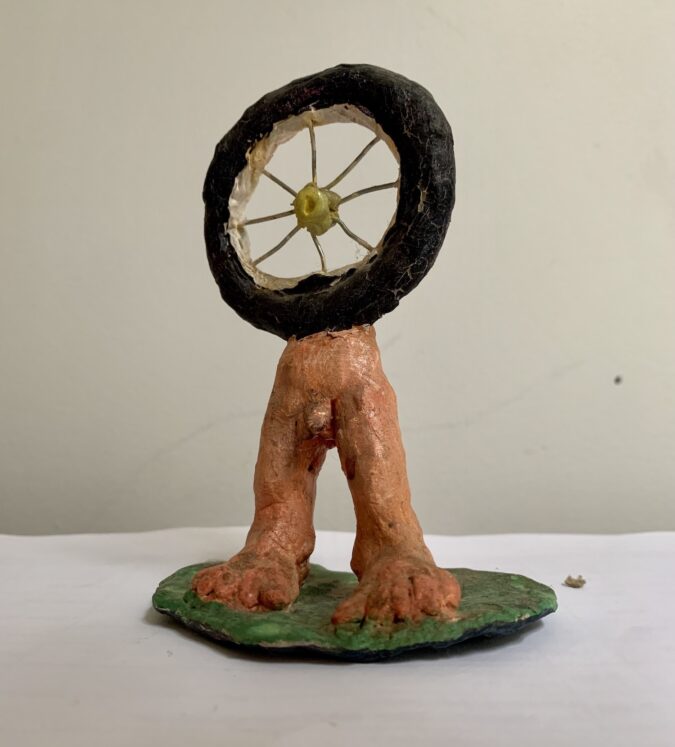
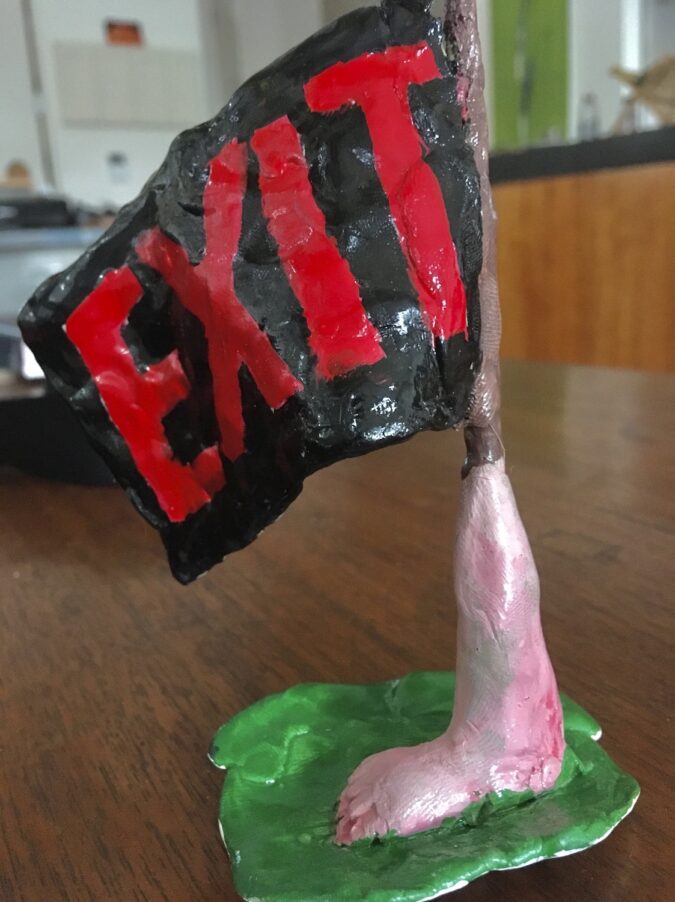
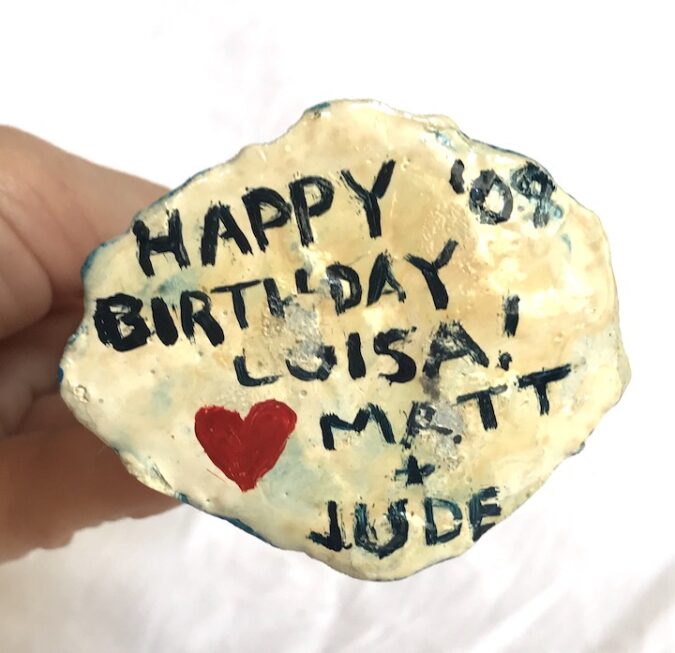 Th
Th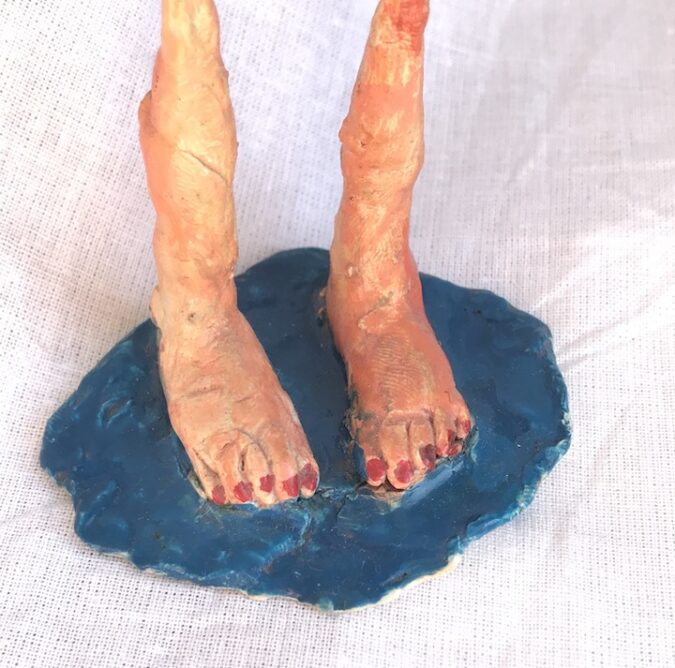
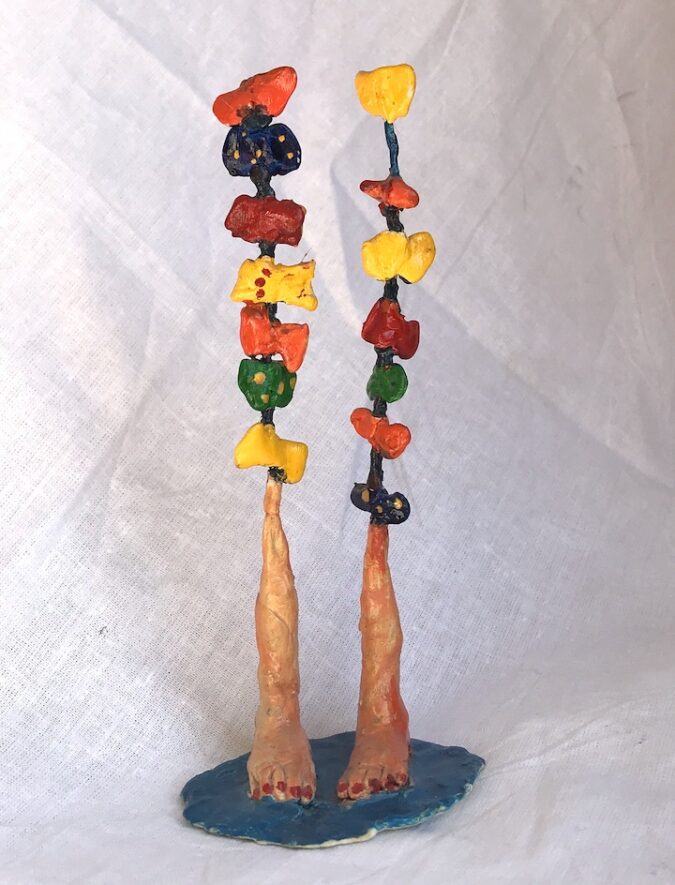






These articles on Matt are wonderful, each bringing another window onto his being. Thanks so very much.
Lisa- thanks for doing this and for sharing some of Matt’s early experiences. Matt was always a supportive presence when
I was struggling with next steps. And I shared his attraction to the figure – appreciating his freedom to
embrace his own sensibilities, swimming against the tide in the art scene by just being himself.
Nice essay Lisa. I knew Matt a bit in Chicago. But not much really. Thank you for filling in the gaps. The art is very good.
Lisa, once again you’ve unearthed an essence. Thanks for bringing us so much of Matt’s.